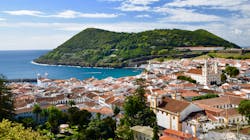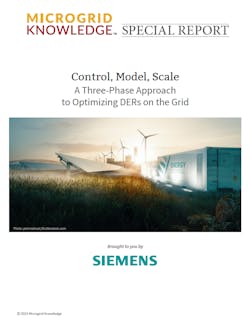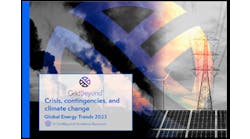In a new special report series, we explore how to optimize DERs on the grid. In this final installment, we look at the Azores' journey towards DER optimizaition.
An archipelago in the middle of the Atlantic Ocean, the Azores are known for their unique and vibrant natural habitats. However, their remote location has made their power supply much less green, relying on generators burning imported fossil fuels. To clean up the power supply and improve energy independence, the Azores have sought to deploy more renewable DERs. The intermittency of those assets, though, has been a limiting factor.
The MGMS allows real-time monitoring and control for the entire infrastructure, and can make hourly or daily projections for production, consumption, and storage utilization, based on a wide range of data that includes observed weather and weather forecasts.
To address the challenge through DER optimization, Portuguese utility Electricidade dos Açores (EDA) tapped Siemens to deploy a large, autonomous battery energy storage system (BESS) and a smart microgrid management system on Terceira Island in the Azores.
Terceira’s capital, Angra do Heroísmo, includes a UNESCO world heritage site, and the new technology enables DER optimization so that more renewable energy can be delivered to the historic city and other towns on the island. In addition to reducing greenhouse gas emissions, more generation from renewable DERs reduces dependence on the mainland. About 60% of energy demand in the Azores is served by imported fossil fuels.
In the Azores, each island has its own independent grid, requiring individualized island solutions such as the new solution on Terceira. EDA decided to invest in the 15-MW BESS, combined with the Spectrum Power Microgrid Management System (MGMS) from Siemens to ensure that no electricity from DERs is wasted and the energy is used as efficiently as possible.
The BESS absorbs surplus energy when renewable DER generation on the island is high, then discharges it back into the grid to cover demand when production is too low. It also regulates frequency and voltage for the archipelago’s electric grid, improving the grid’s stability.
The MGMS ensures that power generation, battery storage and power consumption all work together in the best way. It allows real-time monitoring and control for the entire infrastructure, and can make hourly or daily projections for production, consumption, and storage utilization, based on a wide range of data that includes observed weather and weather forecasts.
The current asset configuration delivers measurable improvements, reducing Terceira’s annual diesel consumption by 1,150 metric tons thanks to the reduction in fossil-fueled generation. The decreased diesel consumption has reduced annual CO2 emissions by more than 3,500 metric tons.
Looking to the future, the system can incorporate an additional six megawatts into the power mix from renewable sources like geothermal energy. That means that with the current 15-MW BESS, the island will be able to expand its share of renewable energy to around 60%. Once that goal has been reached, the modularly designed battery system can be expanded as needed, and the Spectrum system can easily scale to continue DER optimization as the BESS grows and new DERs are added to the Terceira grid.
Download the full report “Control, Model, Scale: A Three-Phase Approach to Optimizing DERs on the Grid” courtesy of Siemens to learn more.








